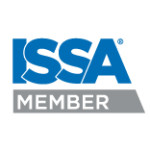Cleaning vs. Disinfecting: When and Why Each Matter
The COVID-19 era had many business owners stocking up on disinfectants and engaging in above-and-beyond cleaning efforts to keep customers and staff safe from the virus. As the world adapts to the ever-changing landscape of post-pandemic woes, you might ask yourself, what cleaning and disinfecting are truly necessary, and can they be overdone? The short answer is yes. Bacteria is a natural part of engaging in public spaces, and a strictly sterile environment is not always a good thing.
Let’s start with the basics.
What is a germ?
Germs fall into four categories: bacteria, viruses, fungi, and protozoa. Some are not harmful at all and can even be eaten (mushrooms = fungi), while others cause severe illness. A germ is a microbe: a tiny microorganism that can invade healthy cells to produce proteins (and when harmful, toxins). These toxins cause the symptoms that you feel when you are sick. While it is important to protect against harmful germs, there are a lot of germs that simply exist in the world and are not to be feared.
The truth is germs are everywhere – in the water we drink, on the surfaces we touch, and even in the air, we breathe. But germs aren’t necessarily a bad thing. Studies have shown that children who go to daycare or are exposed to animals (who trek germs throughout the home) are less likely to develop allergies. Some bacteria exposure is important to build up immunity and keep our systems active in our defense against germs.
Bacteria and viruses
Bacteria are free-living microorganisms, meaning they can survive and reproduce independently. It can also spread through various methods and live on surfaces for an extended period if not eradicated.
Viruses, however, need a living host to replicate and thrive. That is why most viruses are spread through contact through touch, fluids via sneezing and coughing, or sharing air in a confined space. You can also pick up viruses by touching something right after another person who has a virus, but those germs do not survive on that surface for long.
Cleaning essentials
The trouble is that all these microorganisms are too small to see with the human eye – which leaves you to guess what bacteria and viruses are active on any given surface in your space. A customized janitorial plan will ensure that you identify and address problems, high-traffic areas, and the right cleaning methods for each space and surface.
The best place to start is to remove all visible grime and sanitize surfaces, then another pass with a disinfectant in relevant zones should follow. Trained janitorial professionals know that you should always clean before disinfecting; otherwise, disinfecting is ineffective.
Disinfecting: when to go the extra mile
High-touch points are the primary place to focus your disinfecting protocols. Zones and surfaces that come in frequent contact with human touch, or fluids, or are poorly ventilated are where you should concentrate your efforts to reduce the spread of harmful bacteria and viruses.
Disinfection prevents cross-contamination by inactivating (or killing) dangerous microorganisms such as influenza, Methicillin-resistant Staphylococcus aureus (MRSA), SARS-CoV-2 (the virus that causes COVID-19) and Clostridioides difficile (C. diff). These are the dangers you are fighting when you take the time to disinfect properly.
When in doubt, leave it to the pros. Jidan Cleaning offers Electrostatic Disinfection, which is a high-grade solution offering complete, effective coverage that will reduce the transmission of bacteria and viruses in your space.








